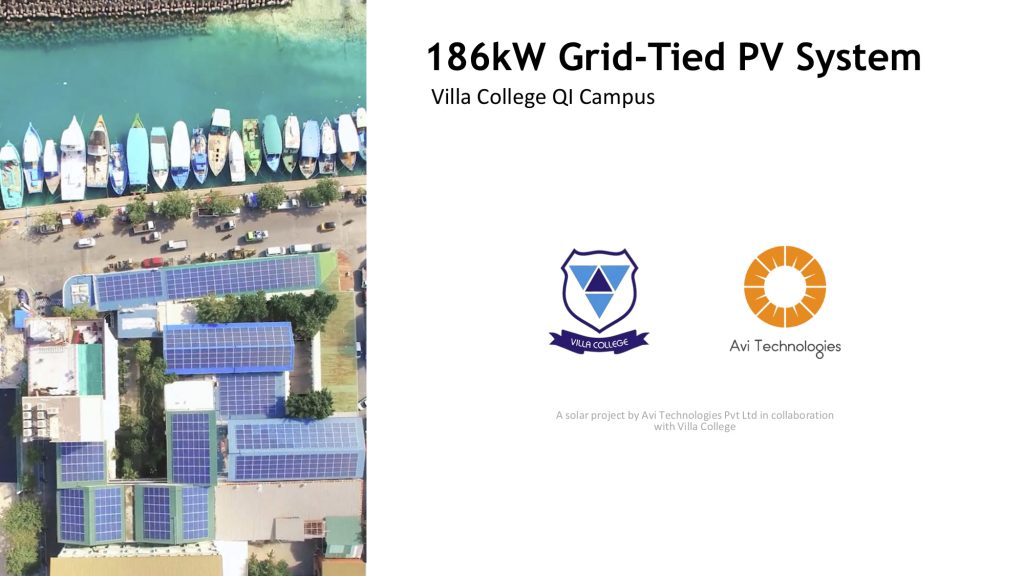The Power of Solar
In 2015 Villa College took a huge step by altering a significant amount of its energy consumption to green energy. 100% of the electronic energy used at Villa College main campus during daylight hours are now powered by the solar system installed in the premises of QI campus, Villa College.
Fenda held a session on 24 October 2018 with Abdulla Naseer, Senior Manager of Villa College and their supplier Hassan Yasir, Avi Technologies to ask about the the project. Below is part of the presentation given by Avi Technologies and sections of the dynamic discussions that followed.
Following is an idea of how the conversation evolved based on what was presented:
- How can design intelligence is incorporated for optimum energy efficiency; Can the running cost of energy consumption and initial investment can be decreased if for example a school is designed intelligently with consideration to orientation, comfortable ventilation; How soon before the investment is recovered; and if it is depicted in a graph, how soon can we see energy savings?
- What would be the cost and power requirement for a small project such as an average house in an island in Maldives?
- The main challenge hindering adoption of solar power for both the customer and the supplier is sourcing finance. Most average households are not able to afford the service. The options for supplier financing are also very limited.
A guesthouse developer in HA. Kelaa in Maldives wanted to find the options for incorporating solar power in the design stage. In the discussion we discovered that Kelaa has apparently passed the island’s solar power quota (30% of total energy consumption in each island) allowed by the Maldives Energy Authority. Questions were raised on how such a quota was set by the state authority and what political, technical or environmental factors have contributed to this limitation. Was it a question about the sustenance of the state electric company or is it about guaranteeing an uninterrupted power supply? What would be the economically beneficial, environmentally sound solution for the problem? How can the state authority led limitations on the country’s energy grid be democratised?
